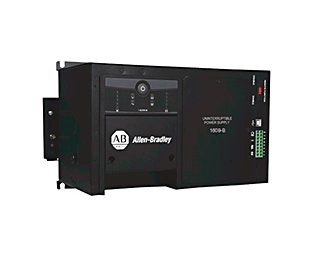Uninterruptible Power Supplies (UPS) Information
 Uninterruptible power supplies (UPS) are backup batteries that provide emergency power to electrical systems in case power becomes unavailable. They are connected between a power source (such as an electrical outlet) and the equipment to protect (such as a motor or computer).
Uninterruptible power supplies (UPS) are backup batteries that provide emergency power to electrical systems in case power becomes unavailable. They are connected between a power source (such as an electrical outlet) and the equipment to protect (such as a motor or computer).
Types of Uninterruptible Power Supplies (UPS)
There are two main types of UPSs: single-phase and three-phase. DC power supplies are also available. Typically, single-phase UPSs are used with computers, bridges, routers, telecommunications devices, and other electronic equipment that requires continuous power. Three-phase UPSs are used mainly with motors and power transformers.
Single Phase
Single phase UPSs provide power conditioning, back-up protection, and distribution for electronic equipment loads. They also prevent power disturbances from affecting equipment performance and life.
Three Phase
As their name suggests, three-phase UPSs operate in conjunction with existing electrical systems to provide power conditioning, back-up protection, and power distribution for loads that use three-phase power.
There are three basic types of three-phase UPSs: on-line or double-conversion, line-interactive, and off-line or standby.
On-line or double-conversion - The load is supplied from a continuously-operating power converter that receives its input from a DC supply. This DC supply consists of a battery and a large battery charger, which are connected in parallel.
Line-interactive - The inverter works in parallel with conditioned-input AC power to supply power to the load (boosting or bucking), and only handles the full load power when the AC input power fails.
Off-line - The power is usually derived directly from the power line, until power fails. After power failure, a battery-powered inverter turns on to continue supplying power.
Specifications
The volt-amp (VA) rating is the maximum of volts multiplied by the number of amperes (amps) that the UPS can deliver. Note that the VA rating is not the same as the equipment’s power drain, which is measured in watts (W).
The watt rating, which is less than or equal to the VA rating, is specified only if the number of volt-amps is unknown.
The input voltage range, the precise identification of the electrical system, is critical to the proper selection of both single-phase and three-phase UPSs.
Performance features for UPSs include self-diagnostics, automatic shutdown, and integral application software.
Interface choices include serial, digital, parallel, modem, Ethernet, and PC card.
Surge suppression options include UL 1449 rated surge protection, rated AC energy absorption, and maximum surge current.
Standards
BS EN 45510-2-2 - Guide for procurement of power station equipment - Part 2: Uninterruptible power supplies
CNS C 4450 - Uninterruptible power supply system (UPS)
IEE UNINTERRUPTABLE POWER - Uninterruptible power supplies
Image credit:
- Alabama
- Arizona
- California
- Colorado
- Connecticut
- Florida
- Georgia
- Hawaii
- Iowa
- Illinois
- Indiana
- Kansas
- Kentucky
- Louisiana
- Massachusetts
- Maryland
- Michigan
- Minnesota
- Missouri
- Mississippi
- North Carolina
- New Hampshire
- New Jersey
- Nevada
- New York
- Ohio
- Oklahoma
- Oregon
- Pennsylvania
- Rhode Island
- South Carolina
- Tennessee
- Texas
- Utah
- Virginia
- Washington
- Wisconsin
- C-UL Listing Mark
- DC Power
- FCC
- Ferro-Resonant
- Grade MIL 901 / 167
- IEC 62040-3
- Lightning
- Line-Interactive
- Off-line (Standby)
- On-line (Double-Conversion)
- Over Voltage
- Power Failure
- Rotary
- Short Circuit
- Single Phase
- Surge
- Three Phase
- UL
- UL 1449 Rated Surge Protection
- Unbalanced Loads
- Under Voltage
- Voltage Sags
- flywheel UPS systems
- 1000kva UPS systems
- 12kva UPS systems
- 12v UPS circuits
- 15kva UPS systems
- 1kva UPS systems
- 208v 3 phase UPS systems
- 220V UPS systems
- 25kva UPS systems
- 30 kVA UPS systems
- 3000 va UPS systems
- 60kva UPS systems
- 750 kVA UPS systems
- centralized UPS systems
- chloride industrial UPS systems
- chloride UPS systems
- commercial UPS systems
- double conversion UPS systems
- dynamic UPS systems
- emergency lighting UPS systems
- giant UPS 500va UPS systems
- IGBT UPS circuits
- industrial grade UPS systems
- internet office UPS
- low temperature UPS systems
- medical grade UPS systems
- medical UPS systems
- modern UPS circuits
- modular UPS systems
- parallel UPS systems
